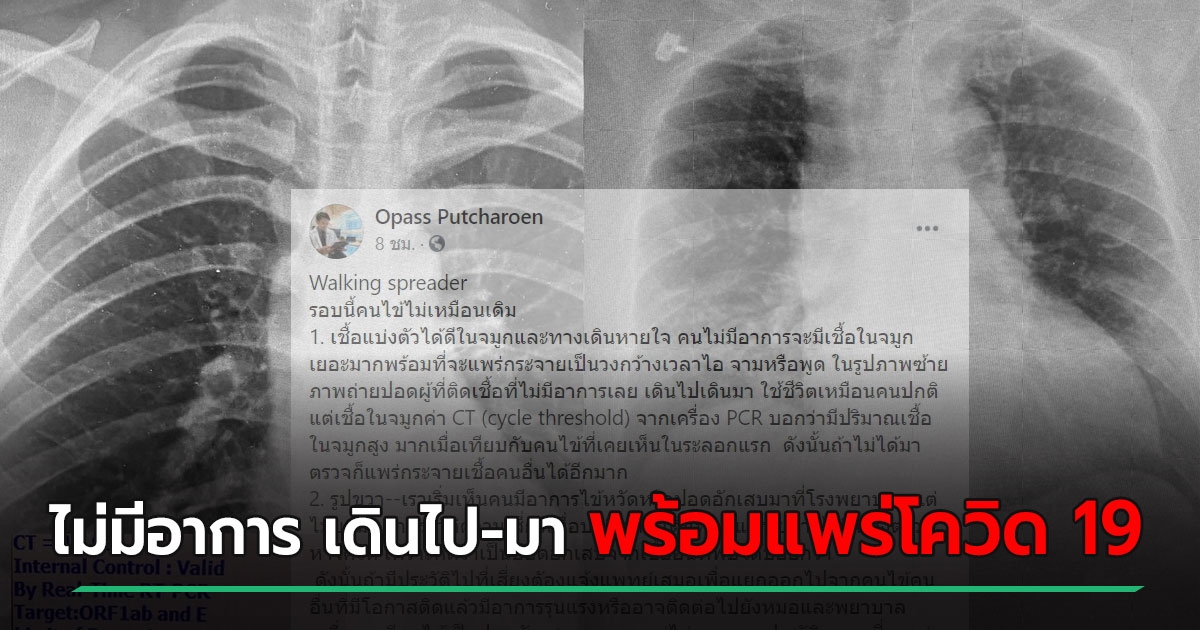Doctors reveal a new wave of COVID-19 patients walking spreader at this time, the patient is not the same, has no symptoms but found a lot of COVID-19 in the nose, ready to spread the disease through coughing and sneezing
On January 3, 2021, Deputy Prof. Opas Puttacharoen, Head of Center for Emerging Clinical Diseases Chulalongkorn Hospital, Thai Red Cross Society, posted a message via Facebook Opass Putcharoen. Stating that the walking spreader in this age, the patient is different.
1. The bacteria divide well in the nose and respiratory tract. Asymptomatic people have a large number of nasal infections ready to spread widely by coughing, sneezing or talking, in the left photo of the lungs. However, the CT (cycle threshold) of the PCR showed that there were a lot of germs in the nose. Much compared to the patients who had seen the first wave Therefore, if they do not get screened, they can spread more infectious agents.
2. Image on the right: we began to see that people with symptoms of flu or pneumonia came to the hospital. But he refused to share the story of the risks to hide the trip. Doctors may not be able to test for COVID-19 because they believe it is more common for pneumonia.
Therefore, if you have a history of being at risk, you should always inform your doctor. To distinguish them from other patients who are likely to contract and have severe symptoms or who can contact doctors and nurses. Yesterday, a patient was examined for pneumonia. But he refused to tell the story of the risk. But doctors saw an abnormal movie like viral pneumonia and sent them to test for COVID-19. And it detects infections When I tried to take the story again and admit that I went to the game What is a casino in “Bangkok”
Fortunately, this case is quickly intercepted, quickly diagnosed. Failure to provide a history of risk can expose healthcare workers to COVID. Because sometimes if care is required for nebulization, the use of oxygen causes the infection to spread in hospitals. Hospitals may lack the strength of doctors and nurses to treat other patients.
>> Read the information and follow the COVID 19 situation << here.

